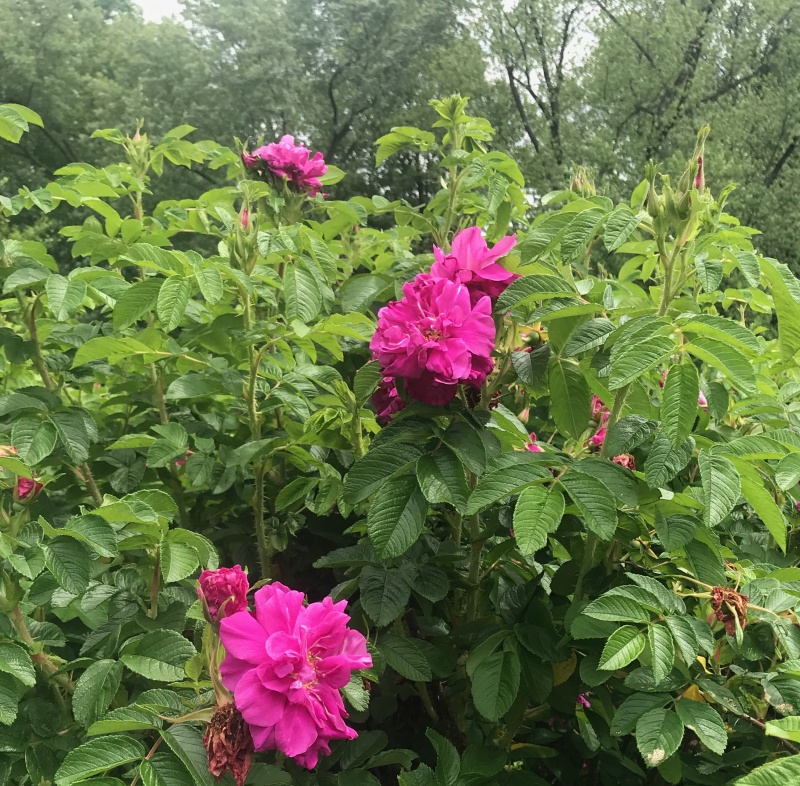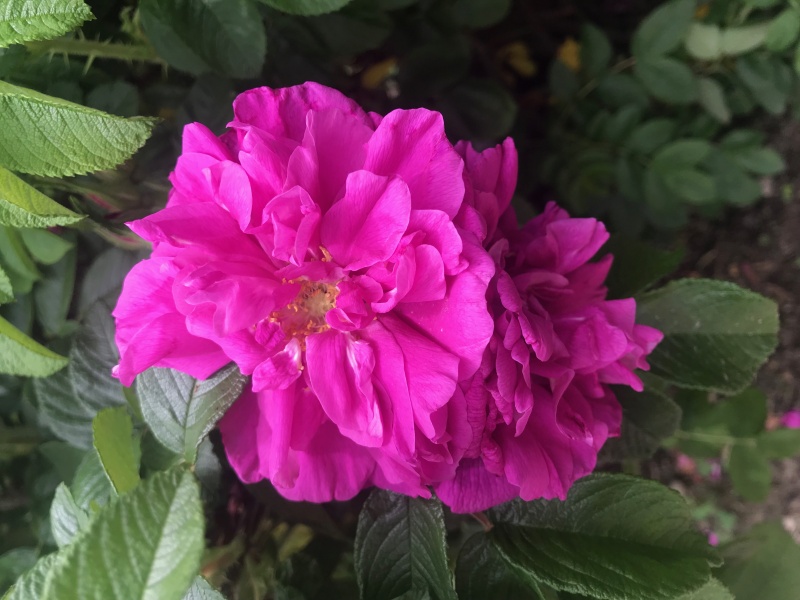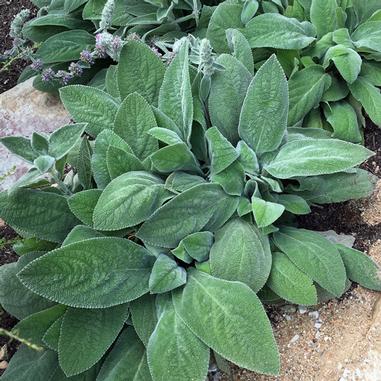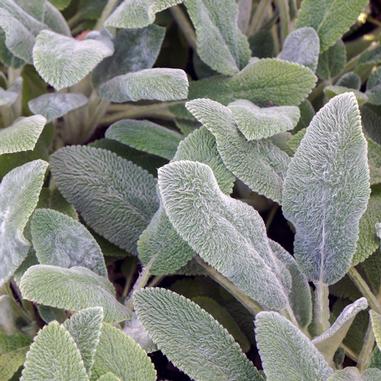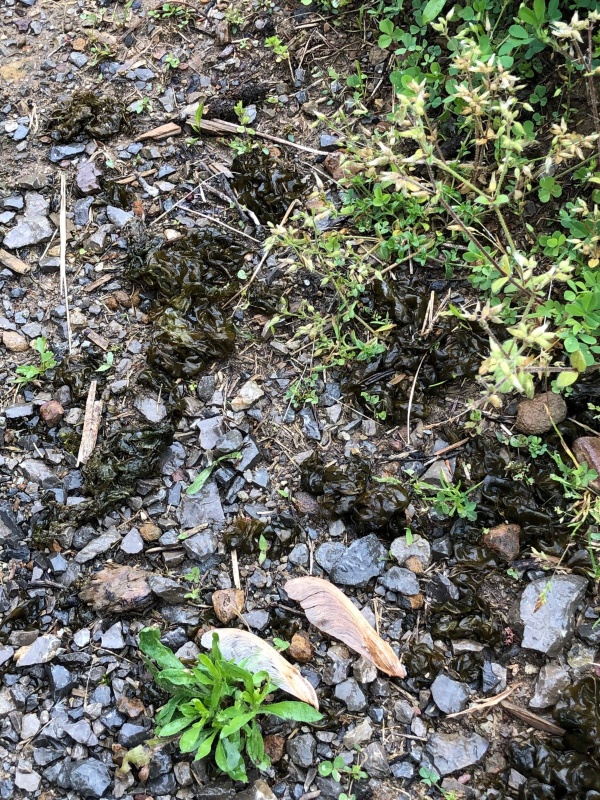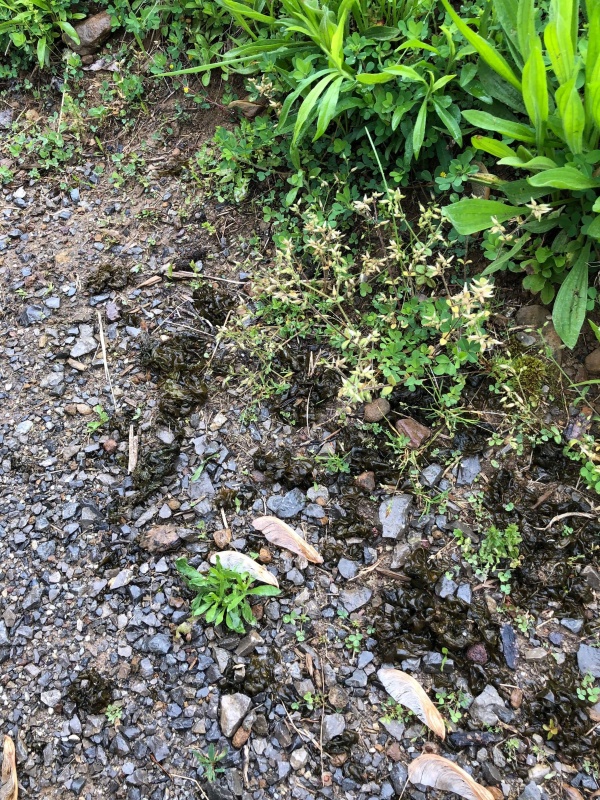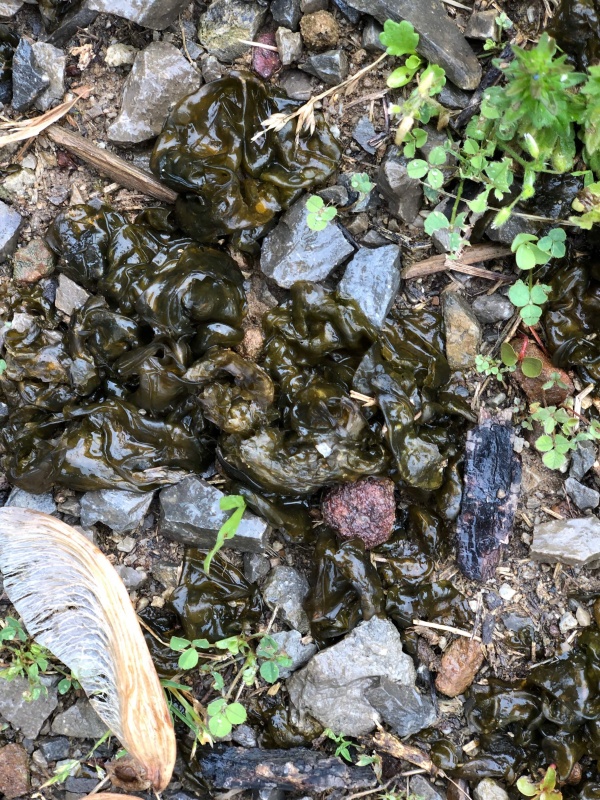By Reba Kocher
Listen to this blog post: Rugosa_Roses_Blog_Post.mp3
One of the Rugosa Bushes in our rose garden.
A close up photo of a double petal Rugosa Rose from our rose garden.
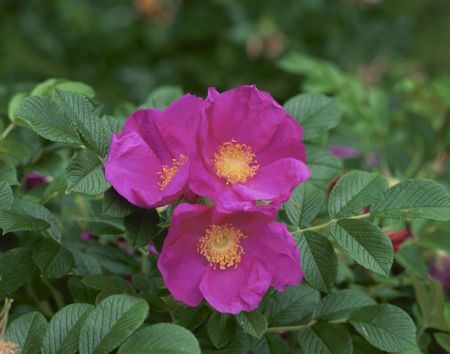
A close of a single petal Rugosa (not at Clary Gardens)
We are so pleased to tell you that our beautiful Rugosa Roses (rosa rugosa) have bloomed! These roses are very fragrant and have gorgeous flowers, and you can find them planted in the rose garden near the amphitheatre!
Rugosas, also known as Beach Roses, Japan Rose, the Letchberry, etc., are an heirloom rose plant that is native to Eastern Asia. You can find these roses growing in the wild in parts of China, Korea, and Japan. They were brought to Europe from Japan around 1796 (this is the date of our first European record of the plant), but they did not become popular in Europe until around 1845 as more people became interested in planting ornamental plants (https://www.cabi.org/isc/datasheet/47835). 1845 also marked the year that these roses were introduced to Canada and the United States. Ever since then, the Rugosa has been a favorite to plant. They come in various pink hues-- from deep pink to rose pink to white.They have a unique wrinkled flower, which gives it the name rugosa (meaning wrinkled in Latin) and they can be either double or single petal. They begin blooming in early summer and, if deadheaded properly, can continue to bloom until the first frost in early winter. Last year, we had our Rugosas blooming until November! In addition to this, they are very hardy and can grow in a variety of habitats. It has been found growing in gravely and sandy beaches, in woodlands, and in grasslands. One reason it remains a horticulturist favorite is because it is extremely resistant to black spot (read about it here), powdery mildew (read about it here), and most insect attacks!
Rugosas, like many other species of roses, have been used in folk medicine, for cosmetics, and for food for hundreds of years. In Eastern folk medicine, the entire plant is used to promote healing. The leaves have been used to lower fevers. The flowers used externally are said to promote blood circulation by acting on the liver and spleen. The flowers used internally are to fix a poor appetite and poor digestion. Additionally, in the East, specifically China, roses are used to make blush and lipsticks. The combined color and fragrance make them an awesome candidate for cosmetics. In the East and West alike, the rose hips (the fruit of the plant) and petals are used in a variety of culinary treats. Rose syrup is made with the petals and can be drizzled over ice cream, used in cocktails or spritzers, added to preserves (it’s great with strawberries and raspberries!) , or used in baking. If you collect the rose hips, you can make Rugosa Rose jam and then put it on warm buttered toast!
We hope to have our Rugosas blooming all summer and into winter, so stop by the Gardens and smell the roses! We are open everyday during daylight hours, and we would love for you to visit!
References & Further Reading
https://www.illinoiswildflowers.info/weeds/plants/rugosa_rosa.htm
http://www.missouribotanicalgarden.org/PlantFinder/PlantFinderDetails.aspx?taxonid=286364https://extension.illinois.edu/hortanswers/plantdetail.cfm?PlantID=436&PlantTypeID=8
https://kusabueroses.jp/en/WildRosesInJapan/
https://www.mortonarb.org/trees-plants/tree-plant-descriptions/rugosa-rose
https://www.youtube.com/watch?v=zNsLgnuRgf4
https://plants.usda.gov/factsheet/pdf/fs_roru.pdf
http://www.historicfood.com/conserve%20of%20roses.htm

